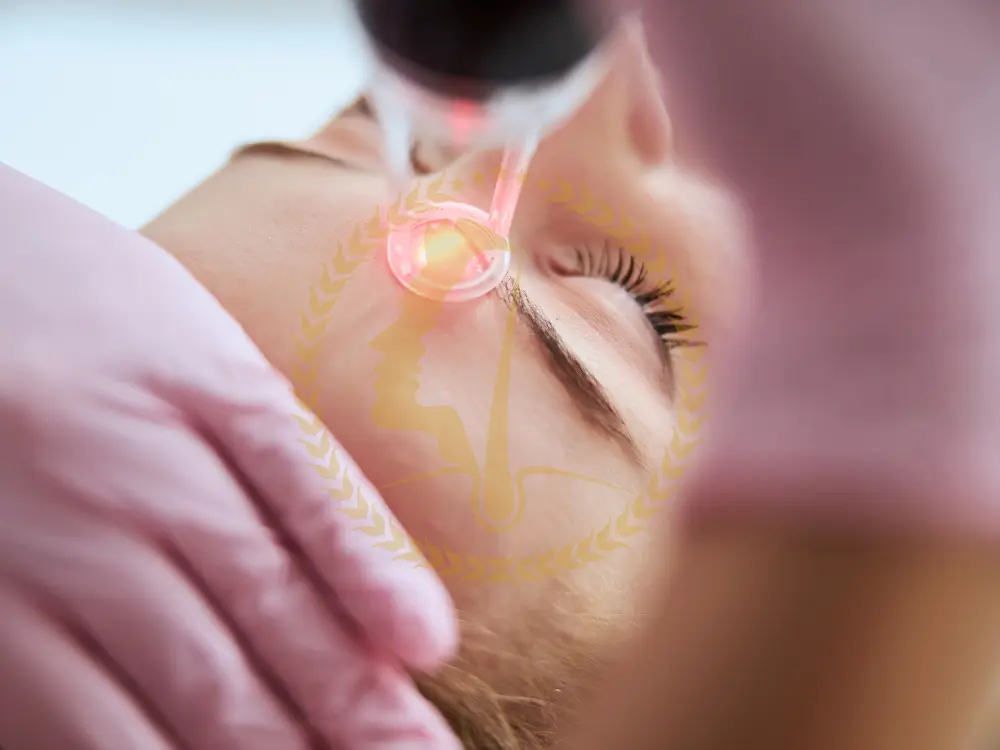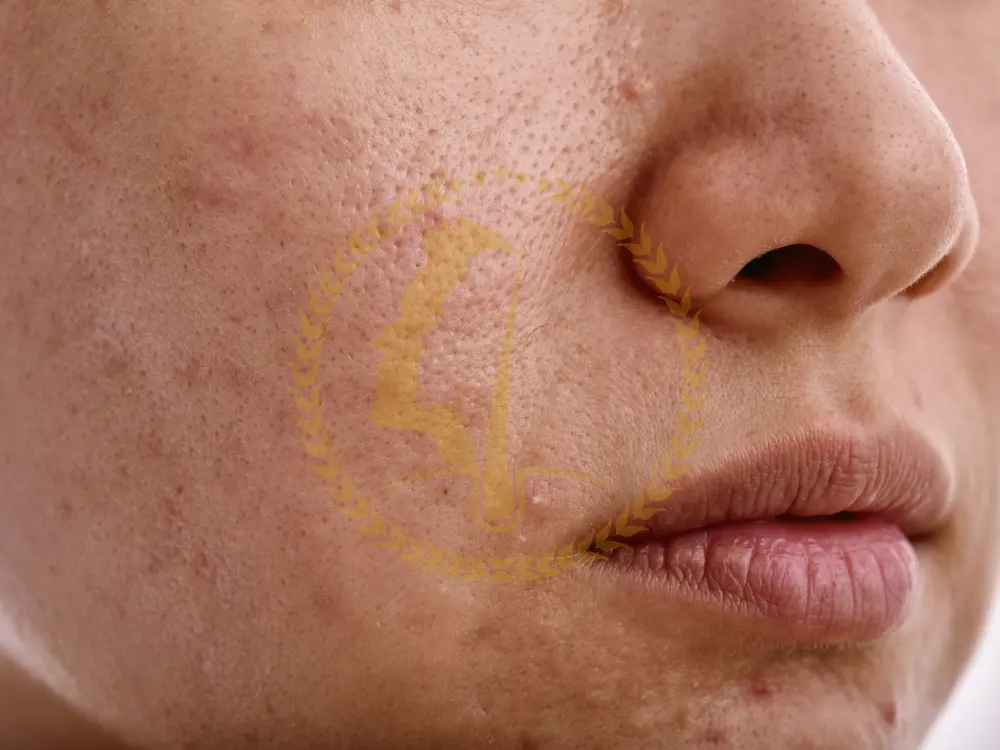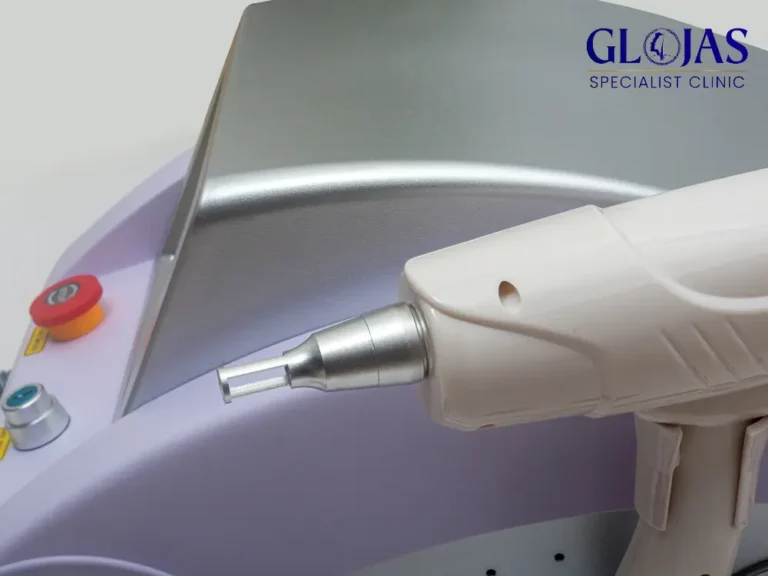Uneven skin pigmentation is a common and often frustrating skin condition that affects people of all ages. Characterized by irregular patches of darker skin, this condition can be caused by a variety of factors, including sun exposure, hormonal changes, and skin inflammation. While there are numerous treatments available, one of the most effective and advanced solutions is the Q-Switch ND (YAG Laser). In this comprehensive guide, we’ll explore what uneven skin pigmentation is, the causes behind it, and how the Q-Switch ND (YAG Laser) can be a game-changer in achieving a more even skin tone.
Understanding Uneven Skin Pigmentation
What is Uneven Skin Pigmentation?
Uneven skin pigmentation, also known as hyperpigmentation, occurs when certain areas of the skin become darker than the surrounding skin. This darkening is due to an excess production of melanin, the pigment that gives skin its color. Hyperpigmentation can manifest in various forms, such as age spots, melasma, freckles, and post-inflammatory hyperpigmentation.
Common Causes of Uneven Skin Pigmentation
- Sun Exposure: Prolonged exposure to the sun’s ultraviolet (UV) rays can stimulate the production of melanin, leading to sunspots, also known as solar lentigines. These are common on areas frequently exposed to the sun, like the face, hands, and shoulders.
- Hormonal Changes: Hormonal fluctuations, especially during pregnancy or due to the use of oral contraceptives, can lead to melasma. This condition results in brown or grayish-brown patches, typically on the face.
- Post-Inflammatory Hyperpigmentation (PIH): This type of pigmentation occurs after an injury or inflammation to the skin, such as acne, eczema, or cuts. PIH results in dark spots that remain long after the wound has healed.
- Aging: As the skin ages, the distribution of melanin becomes more uneven, leading to age spots and a blotchy complexion.
- Genetics: Some individuals are genetically predisposed to developing uneven skin pigmentation, making it a hereditary issue.

Q-Switch ND (YAG Laser): A Breakthrough in Treating Uneven Skin Pigmentation
What is the Q-Switch ND (YAG Laser)?
The Q-Switch ND (YAG Laser) is a cutting-edge laser technology used to treat a variety of skin conditions, including uneven skin pigmentation. This laser works by emitting short pulses of high-energy light that target and break down the excess melanin in the skin without damaging the surrounding tissue. The fragmented melanin is then naturally eliminated by the body’s immune system, resulting in a more even skin tone.
How Does the Q-Switch ND (YAG Laser) Work?
- Targeting Melanin: The Q-Switch ND (YAG Laser) emits light at specific wavelengths that are absorbed by melanin. This light energy is converted into heat, which breaks down the pigmented cells into smaller particles.
- Safe and Precise: The laser is designed to target only the pigmented areas, leaving the surrounding skin unaffected. This precision reduces the risk of scarring or damage, making it suitable for all skin types.
- Stimulating Collagen Production: In addition to breaking down melanin, the laser also stimulates collagen production. This helps improve skin texture and elasticity, giving the skin a more youthful appearance.
The Top 5 Benefits of Q-Switch ND (YAG Laser) for Uneven Skin Pigmentation
- Effective Treatment for Various Pigmentation Issues: The Q-Switch ND (YAG Laser) is versatile and can treat a wide range of pigmentation issues, including melasma, age spots, freckles, and post-inflammatory hyperpigmentation.
- Non-Invasive Procedure: Unlike surgical treatments, the Q-Switch ND (YAG Laser) is a non-invasive procedure that requires no downtime. Patients can resume their daily activities immediately after the treatment.
- Minimal Discomfort: The procedure is relatively painless, with most patients experiencing only a mild tingling sensation during the treatment. A topical anesthetic can be applied to further reduce discomfort.
- Quick and Convenient: Each session typically lasts between 15 to 30 minutes, making it a convenient option for those with busy schedules. Depending on the severity of the pigmentation, multiple sessions may be required for optimal results.
- Long-Lasting Results: With proper sun protection and skincare, the results of the Q-Switch ND (YAG Laser) can be long-lasting. Regular maintenance sessions can help sustain the improvements and prevent new pigmentation from forming.

What to Expect During and After the Q-Switch ND (YAG Laser) Treatment
The Treatment Process
Before the treatment begins, the skin is thoroughly cleansed, and a topical anesthetic may be applied to minimize discomfort. The laser is then passed over the affected areas, delivering short bursts of light energy. The entire process is quick, usually completed within 30 minutes.
Post-Treatment Care
After the treatment, it’s common to experience mild redness and swelling, similar to a sunburn. These side effects typically subside within a few hours to a day. It’s important to avoid direct sun exposure and to apply sunscreen regularly to protect the treated areas. In some cases, the pigmented spots may darken before they begin to fade, which is a normal part of the healing process.
How Many Sessions Are Required?
The number of sessions needed varies depending on the severity of the pigmentation and the area being treated. On average, most patients require 4 to 6 sessions spaced a few weeks apart to achieve their desired results. Your dermatologist will create a customized treatment plan based on your specific needs.

FAQs About Uneven Skin Pigmentation and Q-Switch ND (YAG Laser)
1. Is the Q-Switch ND (YAG Laser Safe for All Skin Types?
Yes, the Q-Switch ND (YAG Laser) is safe for all skin types. Its precision allows it to target only the pigmented areas, minimizing the risk of side effects, regardless of skin tone.
2. How Soon Will I See Results?
Results can be seen as early as the first session, with the skin appearing brighter and more even-toned. However, full results typically become visible after completing the recommended number of sessions.
3. Are There Any Side Effects?
Side effects are minimal and may include temporary redness, swelling, or darkening of the treated areas. These usually resolve on their own within a few days.
4. Can the Q-Switch ND (YAG Laser Be Used on Other Areas of the Body?
Yes, the Q-Switch ND (YAG Laser) can be used on various parts of the body, including the face, neck, hands, and chest, to treat uneven skin pigmentation.
5. How Can I Maintain the Results of My Treatment?
To maintain the results, it’s essential to use broad-spectrum sunscreen daily, avoid excessive sun exposure, and follow a good skincare routine. Your dermatologist may also recommend maintenance sessions to keep your skin looking its best.
6. Is There Any Downtime After the Treatment?
There is no significant downtime after the Q-Switch ND (YAG Laser) treatment. You can return to your normal activities immediately, though it’s advised to avoid strenuous exercise and hot showers for the first 24 hours.
In conclusion, uneven skin pigmentation can be a challenging issue to tackle, but with the advanced technology of the Q-Switch ND (YAG Laser), achieving a more even and radiant complexion is within reach. This non-invasive, effective treatment offers long-lasting results with minimal discomfort, making it an excellent option for those looking to improve their skin tone.
